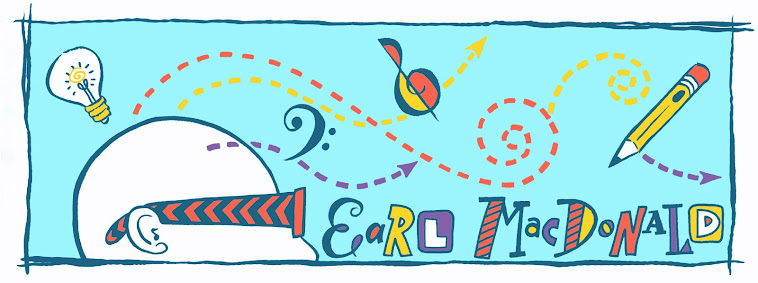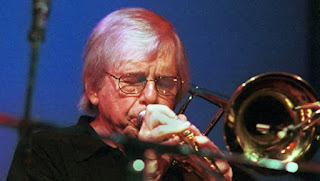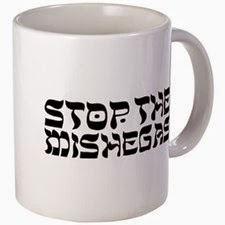Here it is! --- the fourth and final installment of a mini-series looking into the formative years of professional rhythm section players. The questions were posed by Jules Estrin, a jazz Masters degree candidate at the University of Toronto. Previously, responses by bassist Mike Downes, drummer Ted Warren and me were posted. Now we move onto guitar.
Canadian guitarist, Mike Rud won a JUNO award with his last disc, "Notes On Montreal." He has a brand new disc entitled "Miniatures," on which he sings in addition to playing guitar. Here's a promo video:
(I attended McGill University at the same time as Mike, and remember him as the slightly disheveled guy who often stayed up all night transcribing Jim Hall or other master guitarists. He was definitely one of the more advanced players in the McGill jazz program during that era, so it was interesting for me to read about his development, prior to his undergraduate studies.)
How did you get started on your primary instrument?
I was playing guitar from age 11. It wasn't through school. It was seeing the Beatles on TV. Also my older brother had one around the house and he played. As Stevie Ray Vaughan said about his older brother Jimmy Vaughan "he would leave it [the guitar] out where I could reach it and tell me not to touch it...he knew what he was doing."
What made you choose your instrument?
I wanted to be popular! Guitar was what the Beatles were playing (at least the ones who sang)
Did you spend a lot of time experimenting with instruments or jamming after school as a young musician? How much influence did jamming with other players have on you?
Massive. Easily as much as any organized class or lessons, though I also took those (starting guitar lessons at 11, clarinet and jazz big band guitar around grade 8-9). Jamming was part of guitar culture. I did it a lot with my older brother, friends, etc. In that context I could dream.
Who is the first player on recording that made an impression on you and that you tried to emulate on your instrument?
Probably George Benson.
Can you list some players that younger players should be initially trying to emulate from recordings and talk about the specific characteristics of their playing that should be noted?
 Grant Green for time. Ed Bickert for chords and comping. Jim Hall for texture, taste, in-the-moment inspiration and compositionality. Wes Montgomery for warmth, blues ingenuity, and swing. Django for cheer.
Grant Green for time. Ed Bickert for chords and comping. Jim Hall for texture, taste, in-the-moment inspiration and compositionality. Wes Montgomery for warmth, blues ingenuity, and swing. Django for cheer.
Where do you go for resources when you were young? Did you study locally with a teacher when you were young?
I had a number of strong teachers early on. They all really inspired me. I went to the library a lot and took out records in many styles.
What do you see as the primary and secondary roles of your instrument in the rhythm section?
Primarily it's feel. Particularly in comping. So many sub-genres of comping need to be mastered. Secondarily it's probably soloing. The better a student gets as a small-group player, the more he or she will understand their role in a big band.
Can you list some fundamentals that young players should be looking at to get a head start on your instrument?
CHORDS learn a lot of them. Listen an awful lot.
Discuss any special relationships that the instrument in the rhythm section have with each other that you have discovered.
Listen to the snare drum of great drummers, and the rhythms of pianists. Their comping uses essentially the same rhythms you want to.
How do you describe the role of the rhythm section in small band playing vs big band playing?
The rhythm section is different especially for the drums. The guitarist usually needs to play less often and look for a few well-placed chances to provide a nice texture, often behind the soloist. Stay out of the piano's way, but also look for transparent textures that allow you to co-comp effectively with the pianist. You can play a lot less in a big band, and probably should.
Who was your biggest musical influence throughout your primary schooling in music? (ie. Middle school or high school music teacher).
Maybe my first jazz guitar teacher Brian Hughes.
What advice would you give school music teachers about teaching your instrument?
Be really patient with guitarists. They have an uphill battle getting the jazz style right. Encourage them by giving them as many solos as possible. Start combos, not just a big band. Herb Ellis' album "Rhythm Willie" is a great place to hear both a great jazz soloist, and Freddie Green, crystal clear. Basie's birthday on Jazz Casual by Ralph Gleason is good video of Freddie. The Art Of Jazz Band Rhythm Guitar by Bruce Foreman is a really useful comping book. Berklee A Modern Method for Guitar Vol 1-3 (Leavitt) are great for learning to read.
What technical advice would you give a young player starting out on your instrument?
Be a musician first and a guitarist second. Learn to read. Do it every day. Sing everything you play. Everything. Memorize as much as you can about your favorite jazz recordings.
_____________________________________
About Jules:
Jules Estrin is a first-rate trombonist, a graduate of McGill University's jazz program, and is currently completing his Master’s degree, having served as director of the 7 o’clock Jazz Ensemble at the University of Toronto. All the while, Jules continues his regular schedule with the Toronto District School Board, as well as being acting musical director of the JAZZ.FM91 Youth Big Band. During the summer month
Canadian guitarist, Mike Rud won a JUNO award with his last disc, "Notes On Montreal." He has a brand new disc entitled "Miniatures," on which he sings in addition to playing guitar. Here's a promo video:
(I attended McGill University at the same time as Mike, and remember him as the slightly disheveled guy who often stayed up all night transcribing Jim Hall or other master guitarists. He was definitely one of the more advanced players in the McGill jazz program during that era, so it was interesting for me to read about his development, prior to his undergraduate studies.)
How did you get started on your primary instrument?
I was playing guitar from age 11. It wasn't through school. It was seeing the Beatles on TV. Also my older brother had one around the house and he played. As Stevie Ray Vaughan said about his older brother Jimmy Vaughan "he would leave it [the guitar] out where I could reach it and tell me not to touch it...he knew what he was doing."
What made you choose your instrument?
I wanted to be popular! Guitar was what the Beatles were playing (at least the ones who sang)
Did you spend a lot of time experimenting with instruments or jamming after school as a young musician? How much influence did jamming with other players have on you?
Massive. Easily as much as any organized class or lessons, though I also took those (starting guitar lessons at 11, clarinet and jazz big band guitar around grade 8-9). Jamming was part of guitar culture. I did it a lot with my older brother, friends, etc. In that context I could dream.
Who is the first player on recording that made an impression on you and that you tried to emulate on your instrument?
Probably George Benson.
Can you list some players that younger players should be initially trying to emulate from recordings and talk about the specific characteristics of their playing that should be noted?
 Grant Green for time. Ed Bickert for chords and comping. Jim Hall for texture, taste, in-the-moment inspiration and compositionality. Wes Montgomery for warmth, blues ingenuity, and swing. Django for cheer.
Grant Green for time. Ed Bickert for chords and comping. Jim Hall for texture, taste, in-the-moment inspiration and compositionality. Wes Montgomery for warmth, blues ingenuity, and swing. Django for cheer. Where do you go for resources when you were young? Did you study locally with a teacher when you were young?
I had a number of strong teachers early on. They all really inspired me. I went to the library a lot and took out records in many styles.
What do you see as the primary and secondary roles of your instrument in the rhythm section?
Primarily it's feel. Particularly in comping. So many sub-genres of comping need to be mastered. Secondarily it's probably soloing. The better a student gets as a small-group player, the more he or she will understand their role in a big band.
Can you list some fundamentals that young players should be looking at to get a head start on your instrument?
CHORDS learn a lot of them. Listen an awful lot.
Discuss any special relationships that the instrument in the rhythm section have with each other that you have discovered.
Listen to the snare drum of great drummers, and the rhythms of pianists. Their comping uses essentially the same rhythms you want to.
How do you describe the role of the rhythm section in small band playing vs big band playing?
The rhythm section is different especially for the drums. The guitarist usually needs to play less often and look for a few well-placed chances to provide a nice texture, often behind the soloist. Stay out of the piano's way, but also look for transparent textures that allow you to co-comp effectively with the pianist. You can play a lot less in a big band, and probably should.
Who was your biggest musical influence throughout your primary schooling in music? (ie. Middle school or high school music teacher).
Maybe my first jazz guitar teacher Brian Hughes.
What advice would you give school music teachers about teaching your instrument?
Be really patient with guitarists. They have an uphill battle getting the jazz style right. Encourage them by giving them as many solos as possible. Start combos, not just a big band. Herb Ellis' album "Rhythm Willie" is a great place to hear both a great jazz soloist, and Freddie Green, crystal clear. Basie's birthday on Jazz Casual by Ralph Gleason is good video of Freddie. The Art Of Jazz Band Rhythm Guitar by Bruce Foreman is a really useful comping book. Berklee A Modern Method for Guitar Vol 1-3 (Leavitt) are great for learning to read.
What technical advice would you give a young player starting out on your instrument?
Be a musician first and a guitarist second. Learn to read. Do it every day. Sing everything you play. Everything. Memorize as much as you can about your favorite jazz recordings.
_____________________________________
About Jules:
Jules Estrin is a first-rate trombonist, a graduate of McGill University's jazz program, and is currently completing his Master’s degree, having served as director of the 7 o’clock Jazz Ensemble at the University of Toronto. All the while, Jules continues his regular schedule with the Toronto District School Board, as well as being acting musical director of the JAZZ.FM91 Youth Big Band. During the summer month






















